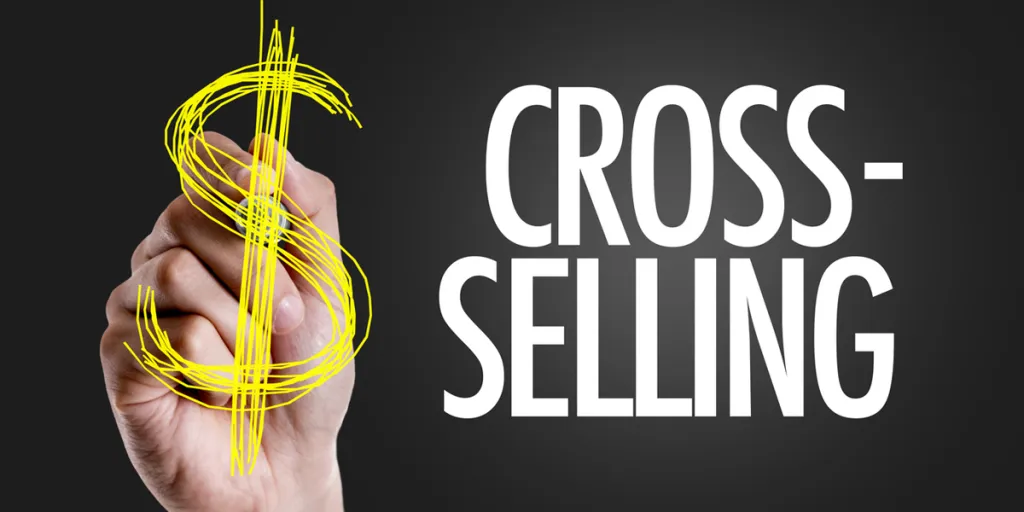If you’re here, you already know influencer marketing is the future of marketing because it’s effective. After all, influencers are authorities in their field or niche. Only 33% of customers trust traditional ads, but over half rely on influencer recommendations when purchasing. The Digital Marketing Institute reports that 60% of consumers would consider buying an influencer-promoted product in-store, and 40% had purchased a product after seeing an influencer use it on social media.
So, let’s get into how partnering with tech influencers can boost sales for your business and how to get started.
Table of Contents
The power of tech influencers
Benefits of partnering with tech influencers
Working with tech influencers
Top tech influencers
Tech influencers on TikTok
Types of influencer collaborations
Next steps
The power of tech influencers
You may think influencers are people with millions of followers on social media. While those people do have influence and partnering with them can benefit some businesses with large budgets, the true power lies in connecting with niche markets.
So, for tech businesses selling consumer electronics, your best bet is to partner with tech influencers who have an established audience that is interested in tech and knowledgeable about tech products.
Benefits of partnering with tech influencers

Collaborating with tech influencers offers numerous benefits for brands looking to boost sales and strengthen their online presence. Here are some of the key advantages:
1. Increased visibility
By partnering with tech influencers, brands can tap into their existing audience and gain exposure to potential customers who aren’t yet aware of their products or services and may not have stumbled across them otherwise. This increased visibility can lead to higher brand awareness and ultimately drive sales.
2. Authenticity and trust
Tech influencers have built a reputation for providing honest and authentic reviews and recommendations to their followers. When they endorse a product or service, their audience is more likely to trust their judgment, leading to higher conversion rates and increased sales.
3. Targeted marketing
As mentioned, tech influencers often have a niche audience with common interests and preferences. By selecting influencers whose audience aligns with their target demographic, brands can ensure that their marketing efforts reach the right people, resulting in higher-quality leads and improved sales conversions.
4. Engaging content
Influencers are masters of creating engaging and entertaining content that resonates with their audience. By collaborating with tech influencers, brands can leverage their creativity and storytelling skills to create compelling promotional content that drives engagement and encourages action.
Working with tech influencers
Typically, the influencer market is broken down into groups based on following, which also impacts the price of collaborating with them (the more followers, the higher the price tag).
The categories are:
- Nano-influencers: 1,000–10,000 followers
- Micro-influencers: 10,000–50,000 followers
- Mid-tier influencers: 50,000–500,000 followers
- Macro-influencers: 500,000–1M followers
- Mega-influencers: 1M+ followers
As mentioned previously, bigger isn’t necessarily always better. Many brands find connecting with smaller, niche audiences that are highly engaged and relevant to the brand incredibly effective.
When thinking about getting started with influencer marketing, consider whether it makes sense for your brand to pursue a big celebrity or if someone in the nano- or micro-influencer spheres could be a better use of your budget.
Top tech influencers
While there are countless tech influencers making waves in the industry, here are some of the top names you should keep an eye on, listed in no particular order:
1. Marques Brownlee (@MKBHD)
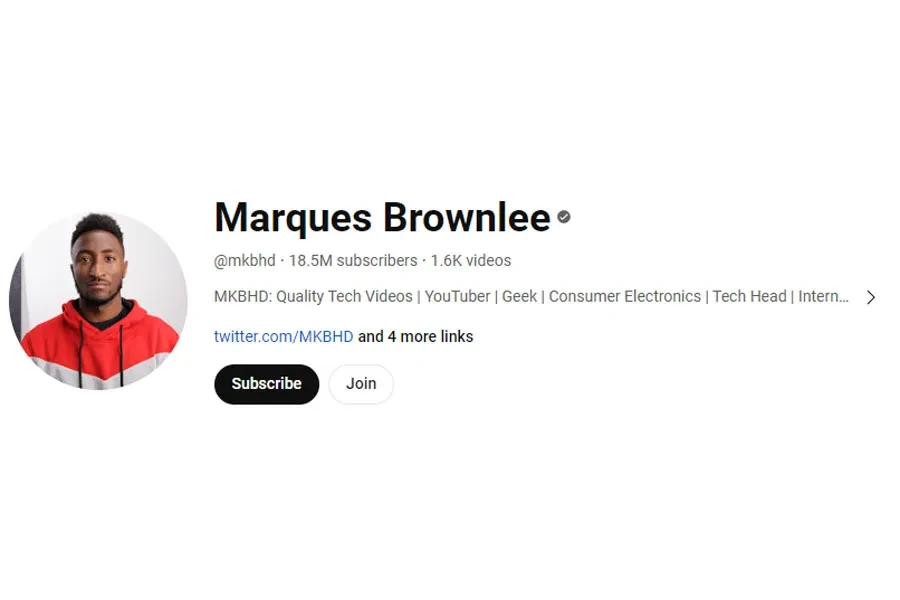
With over 18 million subscribers on YouTube and a strong presence on Twitter and Instagram, Marques Brownlee, also known as MKBHD, is one of the most influential tech YouTubers. Known for his in-depth product reviews and insightful commentary, MKBHD’s recommendations carry significant weight among tech enthusiasts.
MKBHD started on YouTube in 2008 and began his journey reviewing smartphones. He quickly became known for his expertise and credibility due to the attention to detail in his reviews. Another reason he has become incredibly popular is because he’s known for taking the time to engage with his audience—he takes the time to respond to questions and comments.
2. Linus Sebastian (@LinusTech)

Linus Sebastian, the founder of Linus Tech Tips, has amassed a following of over 15 million subscribers on YouTube. With a focus on tech reviews, tutorials, and PC-building guides, Linus’s channel appeals to casual consumers and hardcore tech enthusiasts alike.
What makes Linus Tech Tips stand out is partially their commitment to creating quality content, but also Linus himself. He’s a knowledgeable and charismatic host who is entertaining to watch and knows how to keep his audience engaged. Another thing that makes him stand out is that he’s not afraid to speak his mind.
Additionally, Linus runs another channel, Techquickie, that focuses on creating quick, informative explanations of complex tech concepts.
3. Lewis George “Lew” Hilsenteger (@UnboxTherapy)
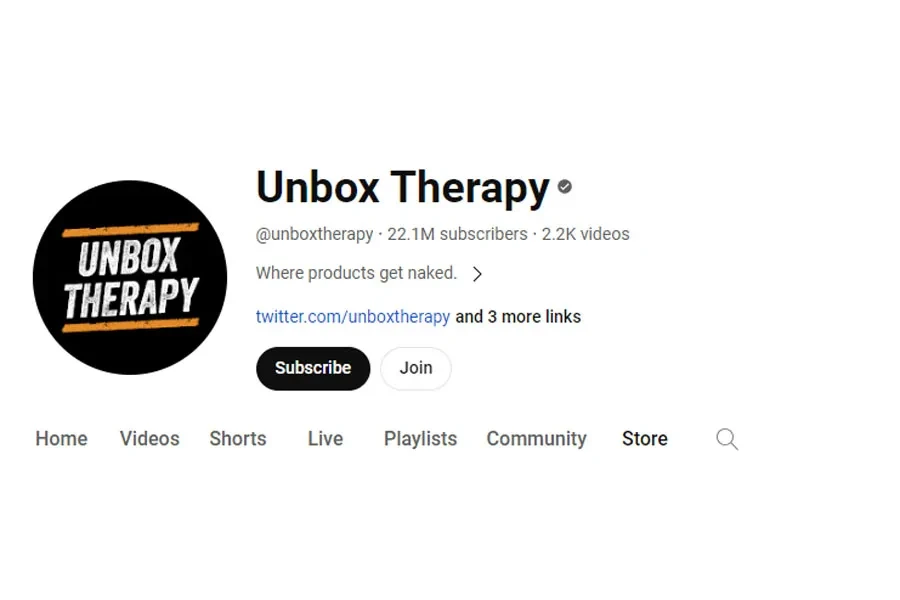
Lew Hilsentenger began his YouTube career unboxing tech products and giving his honest reaction to them. His most popular video, with over 70 million views, is him trying to bend an iPhone 6; now, his channel has over 22 million subscribers, and Hilsenteger has established himself as a trusted source for tech enthusiasts seeking honest and unbiased opinions.
Of course, unboxing videos are a staple on this channel; he’s also made a name for himself reviewing mobile and consumer tech.
4. Austin Evans (@austinevans)
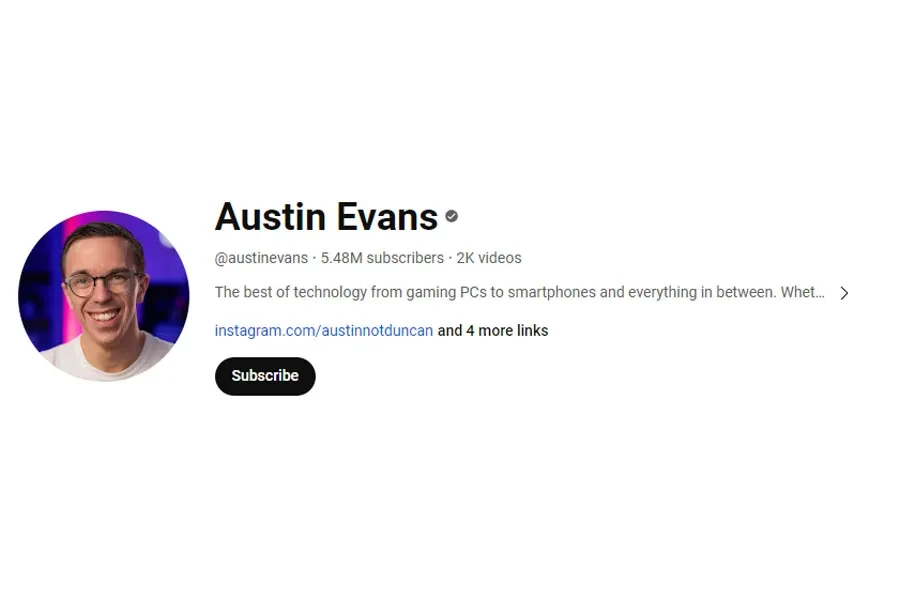
Another stand-out tech YouTuber is Austin Evans, who has over 5 million subscribers. Like many other tech influencers, he specializes in reviews, but his channel covers a wide range of topics, and he has a unique style of presenting information that’s easy to understand.
5. Justine Ezarik (@ijustine)
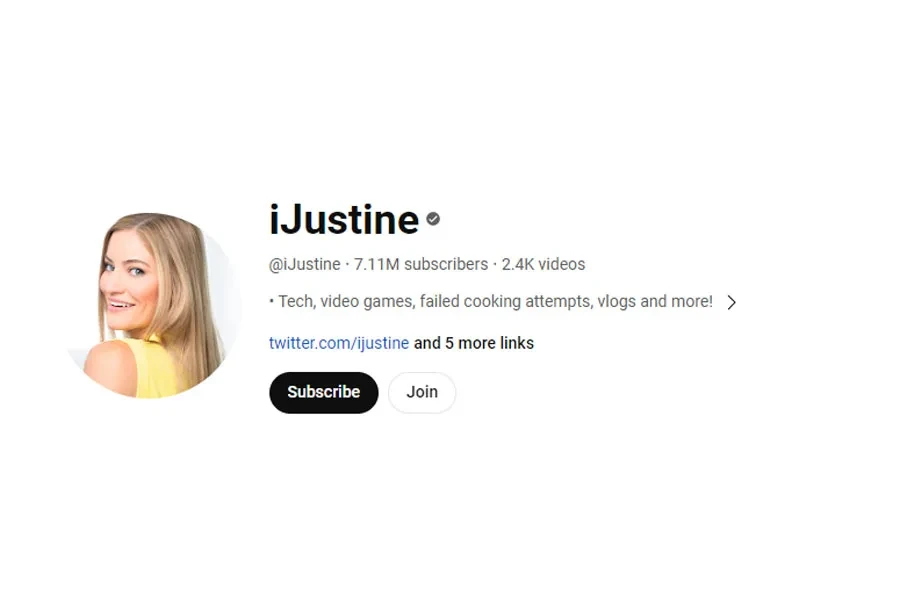
Not all of the top tech influencers are men! Justine Ezarik, better known as iJustine, is a veteran tech YouTuber with over 7 million subscribers. Her engaging personality and diverse content, from unboxing to tech tutorials, have earned her a loyal following and cemented her status as a leading tech influencer.
Tech influencers on TikTok
While many tech influencers thrive on YouTube, TikTok has begun to have a big impact on the influencer space. So, even though things tend to move quickly on TikTok, here are some tech influencers on TikTok to keep on your radar:
- Mary (@marybautistayt) over 900k followers
- Isa does tech (@Isadoes_) over 500k followers
- @Tussalty over 1.2 million followers
- @Justicebuys over 1 million followers
Types of influencer collaborations

So, now that you know how beneficial working with influencers can be, and you’ve started thinking about what types of influencers might be best for your brand, here are some of the types of collaborations you may want to consider. Note that the type of content you want to create can determine which influencers may be best to work with.
Sponsored content
Sponsored content involves paying influencers to create content featuring the brand’s products or services. Sponsored content can take various forms, including social media posts, videos, blog posts, or live streams. It allows brands to effectively leverage the influencer’s creativity and audience reach to promote their offerings.
Product reviews and demonstrations
As you’ve seen, tech influencers often review and demonstrate the latest gadgets, software, and digital products on their channels. Partnering with influencers to review or showcase a brand’s products can provide valuable exposure and credibility, as influencers offer their honest opinions and insights to their audience.
In the tech industry, where products may be more complex or have many features, product reviews and demonstrations can be incredibly helpful for potential customers, and tech influencers are experienced in creating this type of content.
Giveaways and contests
Hosting giveaways or contests in collaboration with tech influencers can generate buzz and excitement around a brand’s products. Influencers can promote the giveaway to their followers, driving engagement and attracting new audiences to the brand.
Affiliate partnerships
Affiliate partnerships involve providing influencers with unique tracking links or discount codes to share with their audience. Influencers earn a commission for each sale generated through their affiliate links. This model incentivizes influencers to promote the brand’s products authentically while also providing a measurable return on investment for the brand.
Brand ambassadorships
Long-term partnerships with tech influencers as brand ambassadors can foster brand loyalty and credibility. Brand ambassadors often create regular content featuring the brand’s products, participate in promotional campaigns, and act as advocates for the brand within their community.
Content co-creation
Collaborating with influencers to co-create content, such as tutorials, how-to guides, or educational videos, can provide valuable value to the audience while showcasing the brand’s products in action. Co-created content allows brands to leverage the influencer’s expertise and creativity to produce engaging and informative content that resonates with their audience.
While each type of influencer collaboration offers benefits, some may be more effective depending on your goals, target audience, and budget. For example, sponsored content and product reviews generate brand awareness and drive immediate sales. In contrast, brand ambassadorships and affiliate partnerships are better suited for building long-term relationships and fostering customer loyalty.
Ultimately, the best type of influencer collaboration for your tech business will depend on factors such as the desired outcome of the campaign, the influencer’s audience demographics and engagement rate, and the budget allocated for influencer marketing. Experimenting with different collaborations and analyzing the results can help businesses determine which strategies are most effective for achieving their marketing objectives.
Next steps
Now, it’s time to find some influencers to work with. While you may want to look into some of the influencers mentioned above, these folks likely come with a high price tag, so you may want to start with smaller or more niche influencers. Take the time to consider the best influencer for your brand and your specific business goals.








